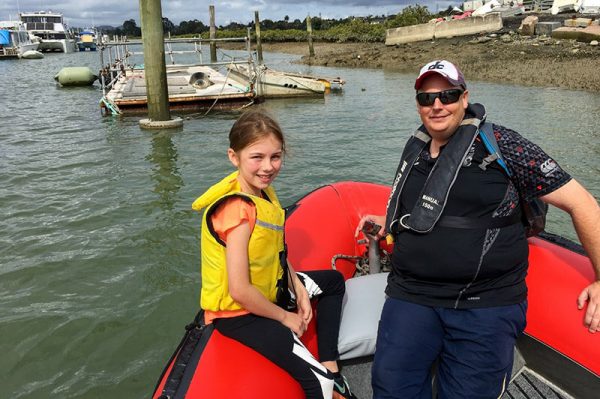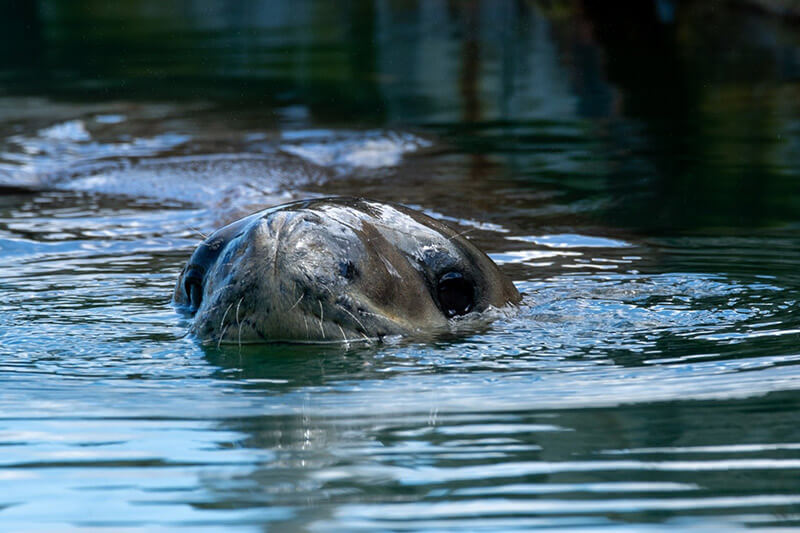
Encountering Leopard Seals
ENCOUNTERING A LEOPARD seal on land
If you approach a seal, please follow these simple guidelines which will enhance your safety and reduce disturbance to the seal:
- Stay at least 20 metres away
- Keep dogs on a lead and at least 20 metres away
- Monitor children closely and keep them at least 20 metres away
- When approaching (and leaving), walk slowly & gently
- Do not disturb seals by making loud noises or throwing things
- Never attempt to feed the seal
- Never attempt to touch the seal
- Keep a clear path between the seal and the water so it can leave
- If in a vehicle do not approach within 50 metres
- When photographing leopard seals use the zoom on your camera, don’t walk closer than 20 metres (see our guidelines about photographing leopard seals)
- If you find a seal on a marina pontoon, contact your marina manager for protocols.

ENCOUNTERING A LEOPARD SEAL IN THE WATER
Leopard seals are intelligent marine mammals and are often curious of human activities. Leopard seals are at home in the water and are very fast and agile when swimming. It is best to avoid interactions with leopard seals in the water.

If you are on the water (in a boat or small watercraft):
- If in a motorised vessel, operate at a slow speed
- Attempt to maintain a 20 metre distance from the seal
- If fishing, immediately remove gear from the water and do not deposit fish chum, parts or whole fish into the water
- If the seal approaches, slowly and calmly move away
- If you feel unsafe make your way to the nearest land
If you are in the water:
- Attempt to maintain a 20 metre distance from the seal
- If the seal approaches, remain calm and try to keep the seal in sight
- Make your way calmly and slowly out of the water
- Avoid making fast movements and touching the seal

Seals are wild animals and will rightly defend themselves if they feel threatened. Although leopard seals are often seen just ‘lying around’ when on land or hauled out on a marina, and therefore may look ‘lazy’ or helpless, they can move surprisingly quickly and are remarkably agile.
While there are no records in New Zealand of leopard seals harming humans or animals, there have been a range of incidents around Antarctica involving humans (including bites and a fatality).
seal behaviour
If you approach a leopard seal, various indicators of seal behaviour may alert you to the internal state of the seal. The details provided here are guidelines on leopard seal behaviours only and you should always use common sense whilst following them.
Please note that some leopard seals around New Zealand have become tolerant of humans – this does not mean that they are not disturbed – but rather that they have, sadly, been disturbed so often that they may not react externally to the harassment until it becomes extreme. Internally, though they may exhibit a raised heart rate and elevated stress hormones. Therefore, always follow the approach guidelines above, even if you are sure the seal is not externally reacting to your presence.
Always remember – if you think the seal is being disturbed, it likely is, but a seal may not always show external agitation signs, so please respect it and give it some space.
Some guidelines around leopard seal behaviour include:
If a seal is lying on the beach and it lifts its head to look at you, it is aware you are there. If it lowers its head and closes it eyes, it is typically not threatened by you. A seal may keep its head lowered and open its eyes and watch you. Typically, it is not disturbed (but please see paragraph above about internal and external reactions).
If a seal lifts its head and keeps it raised for longer than a few moments, it has become concerned about your approach. It may repeatedly lift and lower its head which means it has become agitated by your presence.
If a seal that was previously resting, now moves its orientation away from you as you have approached, it has likely been disturbed. Slowly step back a few meters and monitor the seal. If it lowers its head and returns to rest mode, this is the ‘comfort’ distance for this seal and you should approach no closer (and never closer than 20 metres).
If a seal moves away because you approached it, you have harassed and disturbed it to the point where you have displaced it. The seals movement may be punctuated by a ‘rest’, or may be a continual movement away from you. Any deliberate movement away from you because you approached the seal would be classified as harassment and disturbance to the point where the seals behaviour was changed due to your behaviour.
When a seal opens its mouth directly at you, this is called ‘gaping’. It may be accompanied by a head jerking movement. Both of these are typical threat displays of many animals. Gaping and head jerking are very clear warnings to you – the seal wants you to back off. Even if you are at least 20 metres away, the seal is not comfortable with you being there, so please move a further distance away. A seal showing this behaviour would be classified as harassed and disturbed.
If a leopard seal makes rumbling growls or hissing noises, it is highly agitated and would be classified as harassed and disturbed. However, please note that leopard seals do often make noises when they are resting on land. They may be described as ‘warbles’, ‘moans’ and ‘groans’. These are normal sounds and are distinctly different from the agitated noises.
A seal may repeatedly yawn whilst you are watching it. This behaviour must be taken in context. Sometimes it is purely just yawning (typically seen when the seals head is lowered and its eyes are closed). At other times it is a warning to you to back off (see ‘gaping’ above). Generally, if the seals eyes are closed, it is yawning. However, if its eyes are open, then it is monitoring you and may be giving you a warning. You should consider yawning as a precursor to other behaviours and monitor the seals overall behaviour. If you are uncertain, take a few steps back.